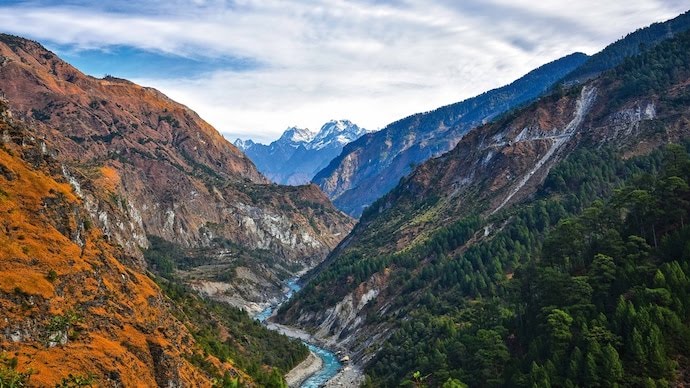A 5.6 magnitude earthquake shook several parts of northern India, including Delhi-NCR. This was the second quake in three days and the third in just under a month.
While the landmass shook on Monday with 5.6 magnitude, the quake on November 4 in Nepal killed 128 with a magnitude of 5.8 on the Richter scale. The series of events have once again triggered the discussions around the mega Himalayan earthquake.
Scientists have regularly issued a stark warning that a massive earthquake, potentially exceeding a magnitude of 8.5, is imminent in the Himalayan region.
A 2018 study led by Indian seismologists, suggested that the central Himalayas, spanning from Uttarakhand to western Nepal, could be hit “anytime in the future”.
The researchers from Jawaharlal Nehru Centre for Advanced Scientific Research in Bengaluru, have drawn comparisons to previous devastating earthquakes.
The 2015 Nepal earthquake, which claimed nearly 9,000 lives, measured 8.1 on the Richter scale, while the 2001 Gujarat earthquake, resulting in over 13,000 fatalities, registered at 7.7.
The analysis is based on geological data and maps from the Geological Survey of India, Google Earth imagery, and satellite imagery from India’s space agency, Isro.
Research has indicated that a catastrophic earthquake, estimated between magnitudes 8.5 and 9, occurred in the central Himalayas between the 14th and 15th centuries, causing a 600-km parcel of land to open up.
Despite frequent low-intensity earthquakes in the central Himalayas, there has been no major seismic activity for several centuries. This absence of significant tremors suggests a substantial build-up of strain in the region, leading to the conclusion that a major earthquake is overdue.
It is worth mentioning that the Nepal quake in October left seismologists surprised despite regular warnings that there is pressure building up under the Himalayas, which sits on a tectonically active border of the Eurasian Plate and the Indian Plate.
Experts have long held that minor earthquakes should not be dismissed as common occurrences but rather seen as indicators of a looming major earthquake.
In 2017, a group of scientists convened a two-day workshop in Dehradun to discuss the impending seismic threat and urged the Uttarakhand government to make the state’s infrastructure earthquake-resistant.
A study conducted by the University of Colorado Boulder’s Department of Geological Sciences in 2016 also warned that the 2015 Nepal earthquake had failed to release the pent-up strain in the central Himalayas.
This accumulated stress, built up over centuries, is expected to be released through a major earthquake, potentially causing unprecedented damage and loss of life. As such, scientists are urging for immediate action to mitigate the potential devastation.
While it is difficult to predict an earthquake, experts are constantly engaged in analysing the tectonic movements and the pressure



